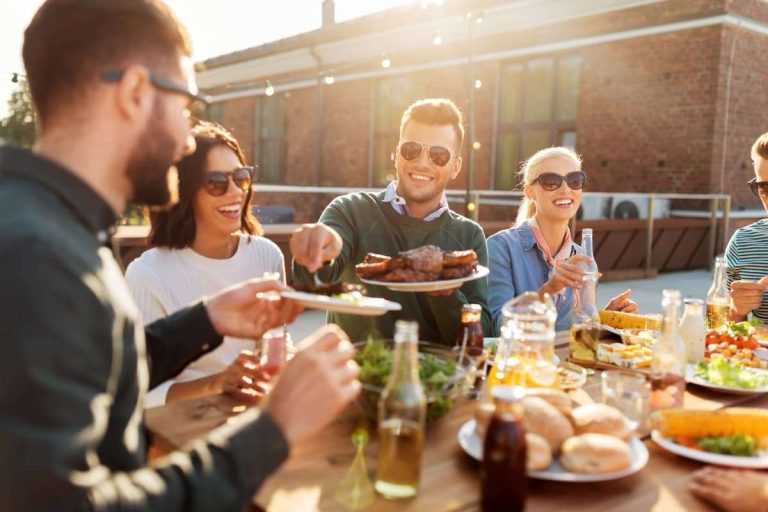Alcohol, specifically rubbing alcohol, is commonly used to cleanse the skin before a blood draw. While alcohol itself does not directly cause bruising, there are factors related to its use Sober living house that can contribute to bruising at the puncture site. One of the main reasons alcohol may lead to bruising is due to its ability to dilate blood vessels. Alcohol consumption can also be related to risky behavior, which could put you at increased risk for back-related injuries and pain. Moderation entails making intentional and informed decisions about the quantity and frequency of our alcohol intake.
Can alcohol cause skin discoloration?
- On people with lighter skin tones, bruises may start out red or purple soon after the injury, then turn light brown, green, or yellow as they heal.
- This is because water is essential for keeping cells hydrated and reducing cell damage.
Heavy drinking for men involves more than four drinks in one day or more than 14 drinks per week. All of these impairments can lead to more morning after bruises, but they can also make driving extremely dangerous. Even small amounts of alcohol can affect your cognitive functioning enough to make driving dangerous. Typically, a bruise begins as a purple or red spot, and as it heals, and the blood is reabsorbed into the body, it can fade to green or even yellow.
Q3: Do certain alcoholic beverages increase the risk of bruising more than others?
- Everyone does not respond the same to bruising either, with some people bruising easily and taking longer to heal.
- Alcohol is known to be toxic to the liver, and a majority of people who regularly consume 4 or more drinks per day will develop a fatty liver.
- A weak immune system makes individuals more susceptible to infections and diseases, making it more challenging to recover from them.
- Long-term usage can contribute to the shrinkage of the frontal lobes of the brain which are responsible for controlling your conscious activities and cognitive skills.
Bill received his (Chemical Dependency Counselor Assistant) license from the Ohio Chemical Dependency Professionals Board in 2020. It’s also very rare, but sometimes, a bruise on your breast may be a sign of a breast infection (mastitis) or inflammatory breast cancer. You may also notice swollen lymph nodes in your armpit or near your collarbone on the same side as the bruised breast. You can help speed your recovery if you use a cushion or gel doughnut when you sit down because this takes the pressure off your tailbone. Going to the bathroom can be painful, so make sure you eat plenty of fiber and drink plenty of fluids to avoid a bout of constipation.
- Second, alcoholism can lead to a condition called thrombocytopenia, which is a low level of platelets in the blood.
- As mentioned earlier avoid alcohol for 24 hours after your appointment and continue icing if necessary.
- Hematomas are more serious than ecchymoses, and they generally need medical attention.
When Can You Drink Alcohol After Botox?
Mindful drinking prioritizes our health goals and allows us to avoid negative consequences such as impaired judgment or dependency. To learn more about how mindful drinking benefits overall well-being, check out our article about health benefits of cutting back on drinking. Some people are born with low levels of important factors that help the blood clot when it Substance abuse needs to control bleeding. If you notice that you have increased bruising, do not stop taking your medications.
Why Do I Have Bruises After Drinking?
As a result, the number of RBC’s in the blood declines and patients develop anemia. Many patients also have some circulating RBC’s that contain ferritin granules called Pappenheimer bodies. The presence of these cells in the blood serves as an indicator of sideroblastic anemia and can prompt the physician to perform a bone marrow examination to confirm the diagnosis. How a bruise looks depends on a lot of things, including your natural skin tone, how bad the injury that caused it was, and how long you’ve had it. You will likely see some discolored skin until the bruise completely heals. But a serious bruise is more likely to be large, painful, swollen, or lumpy.

But if you often drink a lot of alcohol and you tend to get a lot of bruises, it may mean you’ve got liver problems. If you, your mom, and your sister all turn black and blue from the tiniest bump, it may be a family thing. Some people just have more fragile blood vessels, and that makes them more likely to bruise, especially on their upper arms, thighs, or butt. A hematoma is a large pool of blood that may come from a serious injury, such as a major fall or a car accident. Hematomas are usually painful and may make the skin over it feel raised, spongy, rubbery, and/or lumpy.

Limiting Alcohol Consumption for a Better Life
This means that the toxins in alcohol, including acetaldehyde, can build up in your body. In the long-term, these vessels can over-dilate, leading to spider veins on the skin. Certain physical signs and symptoms might indicate that you’ve developed an alcohol addiction. Symptoms of alcoholism vary, but in this piece we’ll focus on some of the physical signs of alcohol dependence. It can help to give you a clearer picture of the ailments, sensations and changes to your body that might happen as a result of alcoholism. Yes, alcohol can cause skin discoloration in the form of bruises or broken blood vessels.
Yes, alcohol-induced bruising can be a sign of an underlying medical condition, such as liver disease, vitamin can alcohol cause bruising deficiencies, or blood clotting disorders. It is essential to address the root cause of the bruising to prevent further complications. While alcohol can contribute to bruising, there are other factors to consider.
The rubbing action can irritate the skin and blood vessels, further increasing the risk of bruising. This disorder also involves having to drink more to get the same effect or having withdrawal symptoms when you rapidly decrease or stop drinking. Alcohol use disorder includes a level of drinking that’s sometimes called alcoholism.
